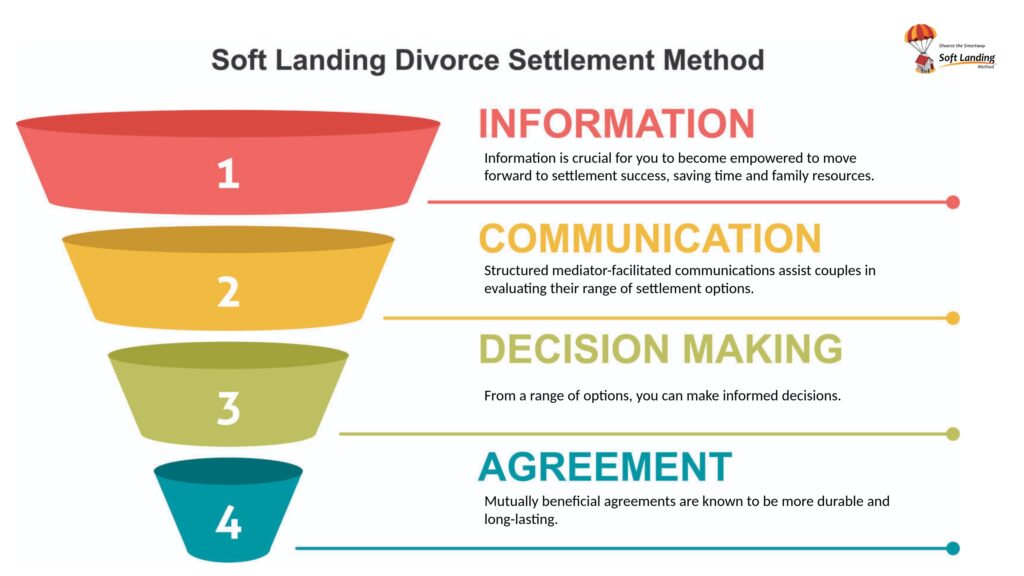The Origins of Conscious Uncoupling
Conscious uncoupling has its roots in both psychology and personal development. Although it gained widespread attention in the early 2010s, the concept has been practiced in various forms for centuries. The term was popularized by actress Gwyneth Paltrow and musician Chris Martin when they announced their separation in 2014. Their amicable breakup and emphasis on co-parenting sparked curiosity and interest in conscious uncoupling as a viable alternative to the traditional and often combative divorce process.
Inspired by the works of psychotherapist and researcher Dr. Judith Wallerstein, Katherine Woodward Thomas developed a comprehensive framework for conscious uncoupling. Drawing upon her own experiences and those of her clients, Thomas sought to create a more compassionate and healing approach to parting ways with a partner.
Self-reflection and personal growth are pivotal in conscious uncoupling. Rather than viewing the end of a relationship as a failure, proponents of this approach see it as an opportunity for individuals to delve deep into their own emotions, patterns, and desires. By engaging in reflective practices such as journaling, therapy, and mindfulness, individuals going through a conscious uncoupling journey can gain valuable insights that can lead to greater self-awareness and emotional healing, empowering them to take control of their own journey.
Furthermore, conscious uncoupling encourages open communication and collaboration between partners, even as they transition from romantic involvement to a different form of relationship. This approach prioritizes respect, empathy, and understanding, allowing both parties to navigate the complexities of separation with grace and dignity by fostering a sense of mutual support and cooperation. Conscious uncoupling aims to minimize conflict and promote a sense of closure rooted in mutual respect and shared growth.
Understanding the Principles of Conscious Uncoupling
Conscious uncoupling is founded on several fundamental principles. First, it recognizes that relationships evolve over time and that the end of a romantic partnership is not necessarily a failure but rather a natural transition in one’s personal journey. Second, it encourages individuals to approach the dissolution of a relationship as an opportunity for growth and self-discovery.
Secondly, conscious uncoupling emphasizes the importance of taking personal responsibility for one’s emotions and actions during separation. It encourages individuals to examine their contributions to the relationship dynamics and to address any unresolved emotional issues that may hinder their ability to move forward.
Furthermore, conscious uncoupling promotes open and honest communication between the partners involved. It encourages dialogue focused on understanding and empathy rather than blame and defensiveness. By fostering effective communication, individuals can create a supportive environment for emotional healing and co-create a new relationship dynamic.
Another essential aspect of conscious uncoupling is the practice of self-care and self-reflection. During this process, individuals are encouraged to prioritize their well-being and engage in activities that promote self-discovery and personal growth. These may include therapy, journaling, mindfulness practices, or hobbies and interests that bring joy and fulfillment.
Additionally, conscious uncoupling involves setting boundaries and establishing clear guidelines for the separation process. By defining boundaries, individuals can create a sense of structure and predictability during emotional upheaval. This allows both parties to navigate the transition respectfully and compassionately, minimizing misunderstandings and conflicts.
Benefits of Choosing Conscious Uncoupling
Conscious uncoupling offers numerous benefits for individuals who choose to adopt this approach. Firstly, it allows for a smoother and less contentious separation process. By prioritizing understanding and respect, conscious uncoupling can minimize conflict and create a more harmonious environment for both partners and any children involved.
Secondly, conscious uncoupling facilitates emotional healing and personal growth. By engaging in self-reflection and introspection, individuals can address their emotional wounds and learn from the experiences that led to the end of the relationship. This self-awareness can lead to greater self-compassion and a deeper understanding of one’s needs and desires.
Lastly, conscious uncoupling promotes healthy co-parenting. By prioritizing children’s needs and maintaining open lines of communication, parents can create a supportive and stable environment for their children. This approach helps children navigate the complexities of separation without feeling caught in the middle of their parent’s conflict.
Moreover, conscious uncoupling encourages individuals to focus on their well-being and self-care during the transition. This can involve seeking therapy, practicing mindfulness, or engaging in activities that bring joy and fulfillment. By prioritizing self-care, individuals can navigate the emotional challenges of a breakup with resilience and grace.
Additionally, conscious uncoupling emphasizes setting boundaries and practicing effective communication. By clearly defining boundaries and expressing needs and concerns openly, individuals can navigate post-separation interactions with clarity and respect. This can help prevent misunderstandings and reduce the likelihood of conflicts arising.
Steps to Successfully Navigate a Conscious Uncoupling
Successfully navigating a conscious uncoupling requires commitment, patience, and open-mindedness. Here are some essential steps to consider:
- Embrace the mindset of conscious uncoupling: Recognize that ending the relationship is an opportunity for growth and self-discovery.
- Take personal responsibility: Reflect on your contributions to the relationship dynamics and address any unresolved emotional issues.
- Communicate openly and honestly: Foster understanding and empathy through open and respectful dialogue with your partner.
- Seeking professional support, such as a therapist or mediator, can be beneficial. They can help facilitate constructive communication, guide emotional healing, and provide a neutral perspective, especially in situations where direct communication between partners may be challenging.
- Setting boundaries and expectations is crucial. It helps clarify your needs and responsibilities regarding co-parenting, financial matters, and other practical aspects of the separation, thereby reducing misunderstandings and potential conflicts.
By following these steps and adapting them to your unique situation, you can create a healthy foundation for your journey of conscious uncoupling.
It’s important to remember that conscious uncoupling is not a one-size-fits-all solution. Each individual and relationship is unique, requiring a personalized approach to navigate this process successfully. One key aspect to consider is the emotional well-being of both parties involved. Prioritizing self-care and emotional healing is not just beneficial, but crucial for the overall success of conscious uncoupling.
Additionally, exploring alternative methods of conflict resolution, such as mindfulness practices or collaborative separation agreements, can foster a sense of mutual respect and understanding during this challenging time. By approaching the conscious uncoupling process with compassion and a willingness to cooperate, both partners can lay the groundwork for a more amicable and supportive transition.
Common Misconceptions About Conscious Uncoupling
Despite its growing popularity, conscious uncoupling is often misunderstood. It is crucial to dispel some common misconceptions associated with this approach:
- Mindful Separation is not about avoiding all negative emotions. It recognizes that separation involves a range of emotions and allows space for individuals to grieve and heal.
- It is not about staying friends immediately after the breakup. While it aims to foster an amicable relationship, it is essential to prioritize individual healing before attempting to establish a friendship.
- Conscious uncoupling does not guarantee an easy or pain-free breakup. It requires time, effort, and a commitment to personal growth and healing.
- Understanding these misconceptions can help individuals approach conscious uncoupling with realistic expectations and a willingness to do the necessary work.
One crucial aspect to consider in conscious uncoupling is effective communication. This process involves open and honest conversations between individuals, allowing them to express their feelings and concerns without judgment. Effective communication can help clarify expectations, set boundaries, and ensure that both parties are on the same page throughout the uncoupling process.
Another misconception about conscious uncoupling is that it is only for couples without children. In reality, conscious uncoupling can also benefit families with children. By approaching the separation with mindfulness and respect, parents can create a healthy co-parenting dynamic that prioritizes the well-being of their children above all else. This approach involves putting aside personal differences and creating a stable and supportive environment for the children during and after the uncoupling process.
The Role of Communication in Conscious Uncoupling
An integral aspect of conscious uncoupling is effective communication. It involves open and honest dialogue focusing on understanding, empathy, and active listening. Here are some fundamental communication strategies to consider:
- Practice active listening: Make a conscious effort to understand your partner’s perspective without interrupting or judging.
- Choose your words wisely: Use non-blaming, respectful, and non-confrontational language to avoid escalating conflicts.
- Express your needs and boundaries: Communicate your needs, expectations, and boundaries while remaining open to compromise.
- Engage in joint problem-solving: Collaborate with your partner to find solutions that prioritize your well-being and the well-being of any children involved.
You can foster a more peaceful and respectful breakup process by prioritizing effective communication.
Effective communication in conscious uncoupling goes beyond verbal exchanges. It also involves nonverbal cues such as body language, tone of voice, and facial expressions. Being aware of these nonverbal signals can help one understand the underlying emotions and intentions behind the words spoken.
Moreover, practicing mindfulness can significantly enhance communication during the uncoupling process. Mindfulness involves:
- Being fully present in the moment.
- Acknowledging your feelings without judgment.
- Approaching conversations with a sense of calm and clarity.
By incorporating mindfulness techniques, individuals can communicate more authentically and compassionately with their former partner, leading to a smoother transition during the uncoupling journey.
Self-Care Practices During the Process of Conscious Uncoupling
Conscious uncoupling is a transformative journey that can be emotionally challenging. It is important to prioritize self-care to navigate this process with grace and self-compassion. Here are some self-care practices to consider:
- Seek emotional support: Reach out to friends, family, or a therapist who can provide a safe and non-judgmental space to express your emotions and receive support.
- Engage in introspection: Take time to reflect on your own needs, values, and desires. Self-reflection can aid in the healing process and guide you toward creating a fulfilling future.
- Practice self-compassion: Be gentle with yourself and acknowledge that the breakup is a challenging experience. Treat yourself with kindness and patience.
- Engage in self-care activities: Take care of your physical and mental well-being by engaging in activities that bring you joy and relaxation, such as exercise, meditation, or pursuing hobbies.
By prioritizing self-care, you can nurture your emotional well-being and facilitate a healthier transition during the conscious uncoupling.
Additionally, exploring new hobbies or interests during this transition can be beneficial. Trying out activities you’ve always been curious about can help you discover new passions and create a sense of excitement for the future. Whether learning a new language, painting, or trying out a new sport, engaging in these activities can provide a much-needed sense of fulfillment and distraction.
Furthermore, incorporating mindfulness practices into your daily routine can help you stay present and grounded during this emotionally turbulent time. Mindfulness techniques such as deep breathing exercises, body scans, or mindful walking can help calm your mind and reduce stress. By cultivating a sense of mindfulness, you can better cope with the uncertainties that come with conscious uncoupling and approach each day with a greater understanding of clarity and peace.
How to Co-Parent Effectively After a Conscious Uncoupling
One of the main advantages of conscious uncoupling is its emphasis on healthy co-parenting. Here are some tips for effective co-parenting post-separation:
- Prioritize the child’s needs: Always keep your child’s well-being at the forefront of your decisions and actions.
- Maintain open lines of communication: Continually communicate with your co-parent about any issues or concerns regarding your child’s upbringing.
- Create a stable routine: Establish consistent boundaries and routines between households to provide stability for your child.
- Avoid speaking negatively about your co-parent in front of your child: Focus on positive co-parenting and keep adult conflicts separate from your child’s experiences.
You can create a healthy and supportive co-parenting relationship by working together and prioritizing your child’s needs.
Furthermore, it is essential to remember that co-parenting is a journey that requires ongoing effort and flexibility. As your child grows and their needs evolve, it is crucial to adapt your co-parenting strategies accordingly. This may involve revisiting agreements, adjusting schedules, or seeking professional guidance to navigate new challenges.
Additionally, practicing empathy and understanding towards your co-parent can significantly contribute to a harmonious co-parenting dynamic. Recognizing that both parents have the child’s best interests at heart, even if their approaches differ, can foster a collaborative and respectful co-parenting relationship. By promoting mutual respect and cooperation, you can create a nurturing environment where your child can thrive despite the changes in their family structure.
Case Studies: Real-Life Examples of Conscious Uncoupling
While conscious uncoupling may still be relatively new, there are numerous real-life examples that showcase its effectiveness. These case studies demonstrate the transformative power of embracing this approach and navigating the end of a relationship with dignity and respect.
One notable case study involves a celebrity couple publicly announcing their decision to uncouple consciously after years of marriage.
That’s why turning to Gwyneth Paltrow and Chris Martin’s high-profile divorce for an explanation of conscious uncoupling simply won’t do. Conscious uncoupling is more than just a vamped-up term for amicable divorce.
To go inside the culture of conscious uncoupling we need to read more and know more than the blogpost written by Paltrow’s lifestyle company that merely scratched the surface. To dive deep, and I mean really deep, we need to start at the beginning. Well, in this case let’s start with endings – with divorce.
Through joint statements and social media posts, they shared their journey of prioritizing their well-being and harmoniously co-parenting their children. This transparent approach helped them find closure and inspired many others to consider a more amicable separation process.
Another compelling example is a non-famous couple who chose conscious uncoupling to honour the love they once shared while acknowledging that their paths had diverged. Attending therapy sessions and practicing open communication could redefine their relationship and transition from partners to supportive friends. This case study highlights the importance of mutual understanding and emotional maturity in navigating the complexities of separation.
Embracing a New Beginning: Life After Conscious Uncoupling
Conscious uncoupling is not just about the end of a relationship but also about embracing a new beginning. It allows individuals to redefine themselves, their goals, and their desires. Individuals can create a fulfilling and intentional future by engaging in self-reflection, healing, and effective communication.
Remember, conscious uncoupling is a journey, and each person’s path will be unique. You can pave the way for a brighter and more authentic future by approaching this process with openness and compassion.
As you navigate through the complexities of conscious uncoupling, it is essential to prioritize self-care and personal growth. This period of transition can be a time of immense transformation and self-discovery. Consider exploring new hobbies, reconnecting with old passions, or embarking on a journey of self-improvement. Embracing this phase as an opportunity for personal development can empower you to cultivate a more profound self-awareness and resilience.
Furthermore, seeking support from friends, family, or a therapist can provide invaluable guidance and emotional assistance during this transitional period. Surrounding yourself with a robust support system can help you navigate the emotional ups and downs that often accompany the process of conscious uncoupling. Remember, it is okay to lean on others for support and guidance as you embark on this journey towards a new chapter in your life.




 The couple does not even speak but will continue to do things separately together, like filing their joint taxes, until the accumulation of divorce cases dies down.
The couple does not even speak but will continue to do things separately together, like filing their joint taxes, until the accumulation of divorce cases dies down.












































